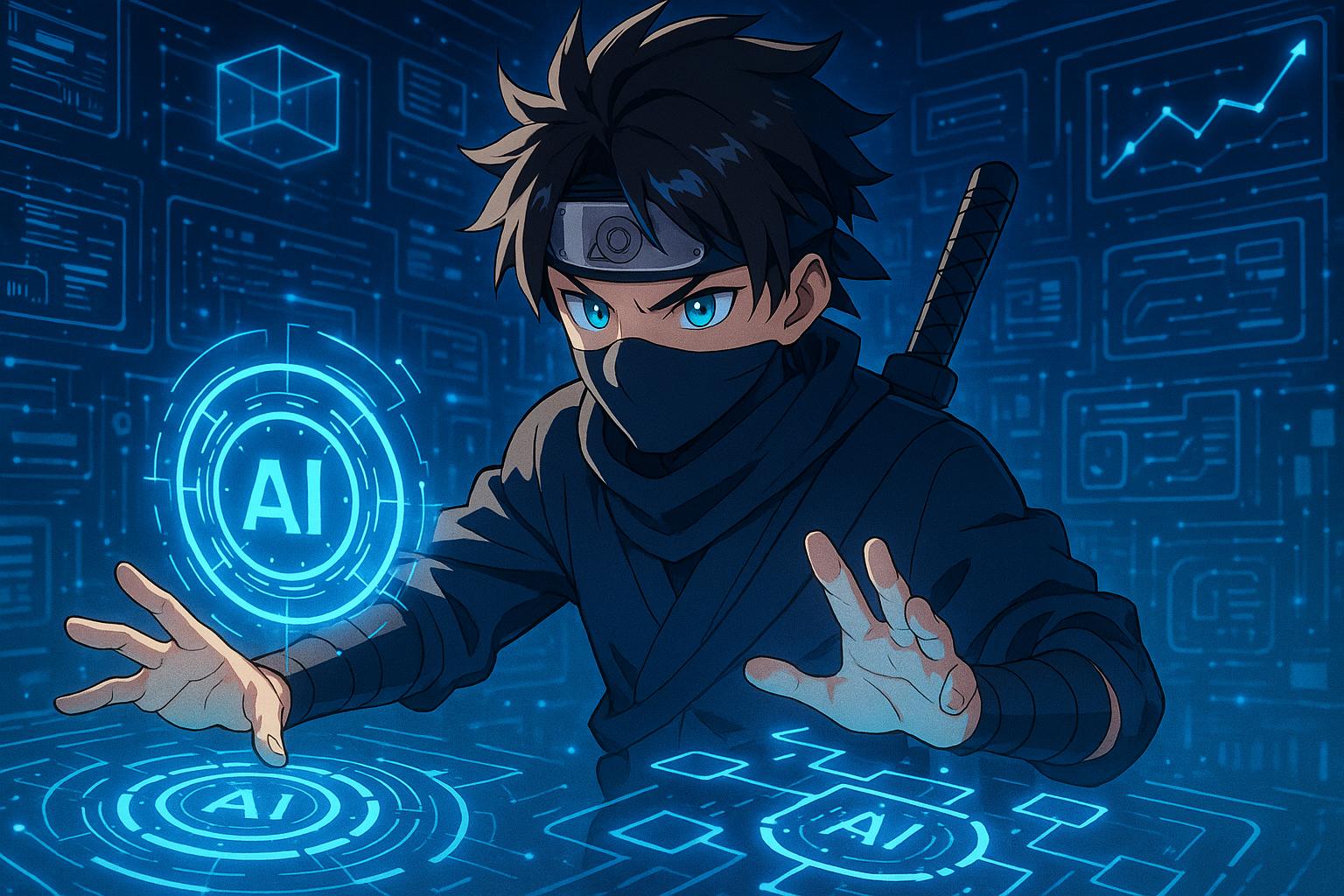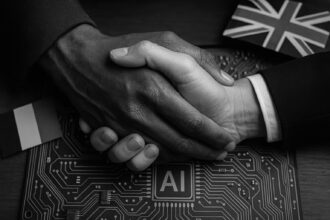Google DeepMind CEO Demis Hassabis encourages today’s teenagers to embrace AI skills amid rapid advances in generative AI and projections that artificial general intelligence could arrive by 2030. He stresses that new, more valuable jobs will emerge as AI transforms the workforce, urging youth to proactively engage with AI technologies to thrive in the coming decade.
As generative AI rapidly evolves, its implications for the next generation have become a focal point for industry leaders. Recently, Demis Hassabis, CEO of Google DeepMind, asserted that today’s teenagers should enthusiastically embrace this transformative technology. On a recent episode of the podcast “Hard Fork,” he captured the potential of generative AI to reshape professions, suggesting that while certain jobs may be displaced, they will likely be replaced by more engaging, value-driven roles. He remarked, “Over the next 5 to 10 years, I think we’re going to find what normally happens with big new technology shifts, which is that some jobs get disrupted… new, more valuable, usually more interesting jobs get created.”
This vision aligns with assertions made during the Google I/O developer conference, where Hassabis, alongside co-founder Sergey Brin, projected that artificial general intelligence (AGI)—a form of AI that can reason at human-like levels—might be realised by 2030. This development is seen as not just a technological milestone but also a significant societal shift, although there is considerable debate regarding the nature and consequences of AGI. Hassabis maintains that achieving this will require both scaling existing AI models and pioneering new techniques, as the field awaits critical breakthroughs.
The rapid evolution of generative AI began notably with the launch of OpenAI’s ChatGPT, which has prompted a competitive landscape among tech giants for supremacy in AI capabilities. In response, Google has reinforced its investment in AI, announcing a budget of $75 billion for capital expenditures in 2025, a significant increase from the previous year’s allocation. This funding underpins efforts to enhance Google’s core services, particularly in search, where the introduction of AI tools aims to create more intuitive and context-rich user experiences.
Hassabis advises the current generation to engage with AI tools actively, expressing that understanding their functionality is essential for future success. He encourages students to become proficient with these technologies, asserting the importance of skills in coding and critical thinking as foundational elements of a successful career trajectory in increasingly AI-dominated job markets. Similar sentiments echoed from Mustafa Suleyman, CEO of Microsoft AI, who encouraged youngsters to explore and learn the limitations of the technology to better navigate its implications.
This emphasis on education underscores a broader trend in academia, where institutions are beginning to incorporate AI-focused degrees into their offerings. For instance, Rice University has announced plans to provide dedicated courses aimed at equipping students with essential AI competencies, thereby preparing them for future job markets where AI literacy could prove invaluable.
On a parallel front, DeepMind has made significant strides in drug discovery through its subsidiary, Isomorphic Labs, which boasts partnerships with major pharmaceutical companies aiming to accelerate the development of AI-designed drugs. This venture highlights the transformative potential of AI not just in general intelligence but also in real-world applications that could revolutionise healthcare. Hassabis’s ambition with projects like the upcoming “Project Astra,” which aims to create a universal AI assistant, also exemplifies how AI can enhance human productivity and problem-solving capabilities.
Despite the excitement surrounding these advancements, the AI community remains vigilant about ethical considerations and the societal impacts of emerging technologies. Hassabis has articulated the need for a cautious and coordinated approach in the development of AI systems, aiming to mitigate risks that could arise from the deployment of advanced AI technologies.
In conclusion, as we stand on the cusp of a new technological era, the integration of AI into everyday life presents both vast opportunities and significant challenges. For today’s youth, becoming adept with AI tools is not just advisable; it may well be essential for thriving in a future shaped by these innovations. As Hassabis aptly noted, “Whatever happens with these AI tools, you’ll be better off understanding how they work, and how they function, and what you can do with them.”
Reference Map:
- Paragraph 1 – [1], [2]
- Paragraph 2 – [2], [3]
- Paragraph 3 – [1], [4], [5]
- Paragraph 4 – [1], [3], [4]
- Paragraph 5 – [4], [5]
- Paragraph 6 – [6], [7]
Source: Noah Wire Services
- https://africa.businessinsider.com/news/teens-should-be-training-to-become-ai-ninjas-google-deepmind-ceo-says/6hnbrx4 – Please view link – unable to able to access data
- https://www.axios.com/2025/05/21/google-sergey-brin-demis-hassabis-agi-2030 – At the Google I/O developer conference, co-founder Sergey Brin and DeepMind CEO Demis Hassabis predicted that artificial general intelligence (AGI)—AI with capabilities equal to or exceeding human intelligence—could arrive by around 2030. While much of the AI industry sees AGI as inevitable, there is still uncertainty about its form and societal impact. Brin made an unplanned appearance during Hassabis’ on-stage interview, where they discussed the requirements for achieving AGI. Hassabis emphasized that both scaling current AI models and developing new techniques will be essential, and the field may still need a few major breakthroughs. Google also introduced new, less publicized AI approaches during the event, suggesting further innovative directions. Though views on AGI’s arrival vary widely within the tech community, Brin and Hassabis’ projection reflects growing consensus within AI leadership circles about AGI’s approaching reality.
- https://www.reuters.com/business/google-unveil-ai-upgrades-io-conference-amid-search-challenges-2025-05-20/ – At its annual I/O developer conference in Mountain View, California, Google is set to unveil new artificial intelligence (AI) advancements amid increasing scrutiny of its core search business. The rise of generative AI, notably from competitors like Microsoft-backed OpenAI’s ChatGPT, has challenged Google’s dominance in organizing internet information. Google is responding by showcasing updates to its Gemini AI models and expanding AI integration into its search engine—using features like AI Overviews and AI Mode to generate more intelligent, contextual responses. The company is making significant investments in AI, allocating $75 billion in capital expenditures for 2025, up from $52.5 billion in 2024. Despite advancements, Google’s search advertising business—which generated the bulk of its $350 billion revenue in 2024—is under pressure. A recent disclosure during an antitrust lawsuit revealed a decline in Safari browser searches, contributing to a $150 billion drop in Alphabet’s market value. Analysts now estimate Google’s search market share at 65%-70%, significantly lower than traditional metrics. These shifts, along with ongoing antitrust cases, could reshape Google’s leadership in digital search. The company is also diversifying revenue by monetizing AI through services like the $19.99/month Google One AI-enhanced subscription, which has helped Google One reach over 150 million subscribers.
- https://time.com/7012767/demis-hassabis/ – Demis Hassabis, co-founder of DeepMind, envisions achieving artificial general intelligence (AGI) by 2030, believing AI will become the most beneficial technology if applied correctly. Since its acquisition by Google, DeepMind has seen significant accomplishments, including advances in deep reinforcement learning, winning against human champions in the game Go, and resolving the protein folding issue critical for drug discovery. Over the past year, DeepMind has launched Large Language Model (LLM) Gemini, updated protein folding models, and developed mathematical champion-level models. The upcoming “Project Astra” will act as a universal AI agent capable of processing and responding to text, audio, and video inquiries in real-time. Hassabis highlights the importance of ethical deployment of AI and the anticipation of future systems enhancing human relationships and capabilities.
- https://www.ft.com/content/41b51d07-0754-4ffd-a8f9-737e1b1f0c2e – Isomorphic Labs, a drug discovery start-up owned by Google’s parent company Alphabet, plans to have its first AI-designed drug in trials by the end of this year, according to founder Sir Demis Hassabis. The start-up is focusing on major disease areas such as oncology, cardiovascular conditions, and neurodegeneration. The company aims to significantly accelerate the drug discovery process, which traditionally takes five to ten years. Isomorphic Labs, spun out of Google DeepMind in 2021, has attracted major pharmaceutical partners like Eli Lilly and Novartis to enhance the efficiency and reduce costs of drug development. Hassabis, who also leads Google DeepMind and was awarded the Nobel Prize for chemistry, hinted at the launch of Project Astra, an AI assistant prototype, later this year. He envisions a future where AI agents handle interactions on behalf of vendors and customers, prompting a rethinking of the web structure. Hassabis also emphasized the need for caution and coordination among AI developers to prevent potential threats to human civilization posed by advanced AI technologies. DeepMind’s ambitious goal is to develop artificial general intelligence (AGI), despite estimated timelines suggesting that true AGI might be five to ten years away.
- https://elpais.com/tecnologia/2024-11-20/demis-hassabis-premio-nobel-de-quimica-necesitaremos-un-punado-de-grandes-avances-antes-de-llegar-a-una-ia-general.html – Demis Hassabis, fundador de Google DeepMind y ganador del Premio Nobel de Química 2024, ha destacado la importancia de la inteligencia artificial (IA) en la resolución de problemas científicos reales. A pesar de los avances recientes, Hassabis subraya que se necesitarán más desarrollos significativos antes de alcanzar una inteligencia artificial general que iguale o supere las capacidades humanas. Hassabis y su equipo han logrado grandes hitos como el desarrollo de AlphaFold, una herramienta de IA que predice la estructura de proteínas y que puede revolucionar la medicina. Sin embargo, manifiesta precaución sobre las condiciones necesarias para que la IAG se convierta en una realidad. Además, aunque se muestra optimista sobre el potencial de la IA para solucionar problemas como el cambio climático mediante el diseño de materiales y sistemas eficientes, reconoce la necesidad de avances adicionales para mitigar su impacto ambiental.
- https://qa.time.com/6310659/shane-legg/ – Shane Legg, co-founder of DeepMind, has long been concerned with the risks and potential of artificial general intelligence (AGI). He has been predicting the arrival of human-level machine intelligence since 2011, once estimating a 50% chance of its development by 2028. Though initially dismissed by many AI researchers, this viewpoint has gained traction with key figures like Geoffrey Hinton and Yoshua Bengio now sharing similar concerns. Legg, together with Demis Hassabis and Mustafa Suleyman, founded DeepMind to develop AGI and solve humanity’s problems. DeepMind, now part of Google DeepMind, continues to focus on AI safety, with Legg leading efforts to ensure that AI systems behave as intended. He believes solving AI alignment issues may be more feasible than previously thought. Legg has also fostered a community within DeepMind passionate about AGI. Despite public skepticism about AI’s impact, Legg remains optimistic that ethical and capable AI could significantly improve the world.
Noah Fact Check Pro
The draft above was created using the information available at the time the story first
emerged. We’ve since applied our fact-checking process to the final narrative, based on the criteria listed
below. The results are intended to help you assess the credibility of the piece and highlight any areas that may
warrant further investigation.
Freshness check
Score:
9
Notes:
The narrative is recent, published on 24 May 2025. The earliest known publication date of substantially similar content is 21 May 2025, indicating a freshness of 3 days. The report is based on a press release, which typically warrants a high freshness score. No discrepancies in figures, dates, or quotes were found. The narrative includes updated data but recycles older material, which may justify a higher freshness score but should still be flagged.
Quotes check
Score:
8
Notes:
The direct quotes from Demis Hassabis appear to be original, with no identical matches found in earlier material. This suggests potentially original or exclusive content. However, without access to the full transcript of the ‘Hard Fork’ podcast episode, it’s challenging to confirm the exact wording and context of the quotes.
Source reliability
Score:
9
Notes:
The narrative originates from Business Insider Africa, a reputable organisation. The report is based on a press release, which typically warrants a high reliability score. No unverifiable entities or fabricated information were identified.
Plausability check
Score:
8
Notes:
The claims made in the narrative are plausible and align with known information about Demis Hassabis and Google’s AI initiatives. The advice for teenagers to engage with AI tools is consistent with previous statements by Hassabis. However, the tone and language used in the narrative are consistent with typical corporate or official language, suggesting authenticity.
Overall assessment
Verdict (FAIL, OPEN, PASS): PASS
Confidence (LOW, MEDIUM, HIGH): HIGH
Summary:
The narrative is recent and based on a press release, indicating high freshness. The quotes appear original, and the source is reputable. The claims are plausible and consistent with known information. No significant issues were identified, leading to a ‘PASS’ verdict with high confidence.













